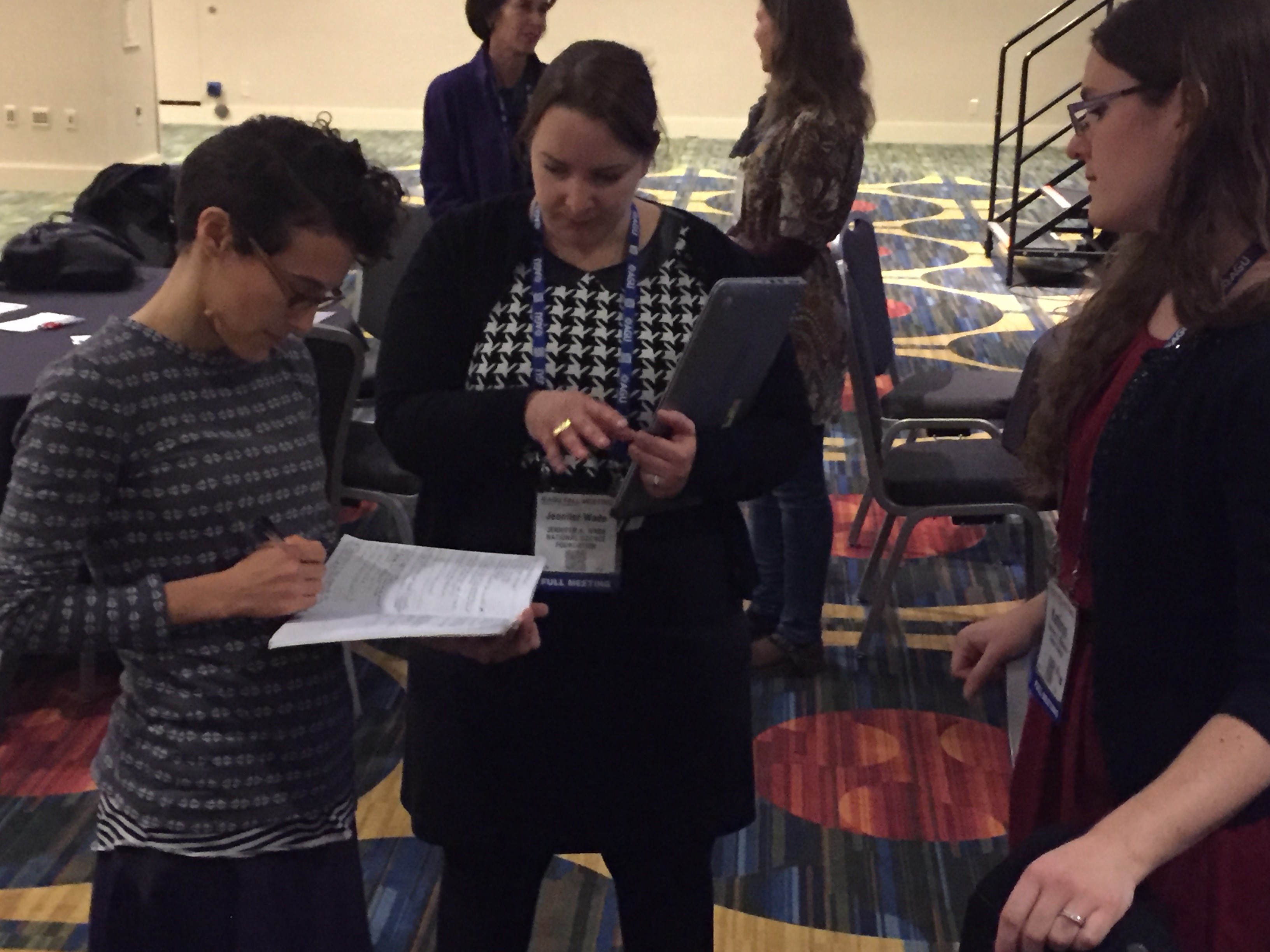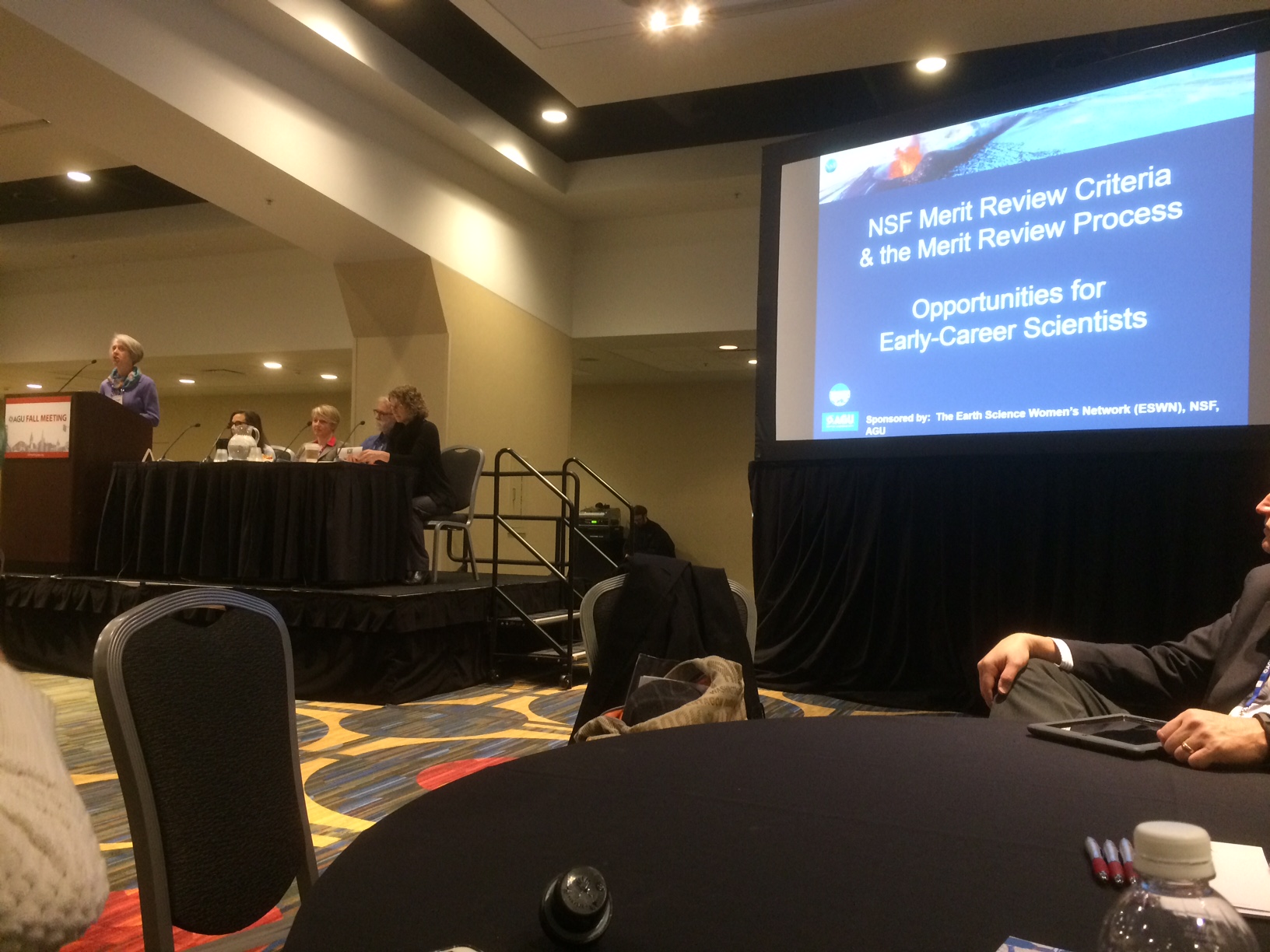“Navigating the NSF System” Draws Record Attendance at American Geophysical Union (AGU) Fall Meeting

EAR Program Director Jennifer Wade speaks with NSF workshop attendees
September 18, 2017
The Directorate for Geosciences’ (GEO) “Navigating the NSF System” workshop at the American Geophysical Union (AGU) Fall Meeting had record attendance this year—with more than 75 graduate students, postdoctoral researchers, and early- to mid-career researchers in attendance. The workshop, held on Dec. 14, 2016, was sponsored by the Earth Science Women’s Network (ESWN) and AGU.
Jennifer Wade, Program Manager for the Petrology and Geochemistry in GEO’s Division for Earth Sciences (EAR), spearheaded the effort for GEO—tailoring the workshop content to scientists thinking about applying for NSF funding for the first time. She fined-tuned the workshop’s format based on annual survey information collected by ESWN, providing ample opportunity for potential NSF applicants to work in small groups and one-on-one with GEO program staff from every division (Atmospheric and Geospace, Earth, and Ocean Sciences, and Polar Programs).
The workshop featured a formal presentation about NSF’s merit review process and merit review criterion, and then GEO program staff broke into small working groups with potential applicants to answer questions and match research interests to appropriate program homes. The workshop provided the research and education community with direct access to GEO program staff.
“This workshop allows us to dedicate ourselves to listening and learning from our community. We want to assure new-comers that the NSF culture embraces direct interaction with program staff—that we are accessible and supportive, and want them to succeed,” said Wade. “Participants engaged directly with GEO program staff on a personal level, helping us to articulate best practices as well as to keep the pulse of our community, especially our very important early-career researchers.”
Four of the most common questions Jennifer and her colleagues asked and answered at the workshop, included:
- What are the main elements to consider when crafting a good postdoctoral research proposal?
- What makes for a good educational component in a CAREER proposal?
- How do multidisplinary projects get reviewed, and are they harder to get funded?
- What makes for a good REU site?
For the answers to these questions, or any others you may have about a GEO research or education program, please feel free to reach out directly to GEO staff. We encourage you to call, and look forward to speaking with you.
This material is available primarily for archival purposes. Telephone numbers or other contact information may be out of date. Originally published Feb. 15, 2017.
Subscribe to EAR updates by sending a blank email to join-earth@listserv.nsf.gov. You can unsubscribe at any time by sending an email to earth-unsubscribe-request@listserv.nsf.gov.
The U.S. National Science Foundation propels the nation forward by advancing fundamental research in all fields of science and engineering. NSF supports research and people by providing facilities, instruments and funding to support their ingenuity and sustain the U.S. as a global leader in research and innovation. With a fiscal year 2023 budget of $9.5 billion, NSF funds reach all 50 states through grants to nearly 2,000 colleges, universities and institutions. Each year, NSF receives more than 40,000 competitive proposals and makes about 11,000 new awards. Those awards include support for cooperative research with industry, Arctic and Antarctic research and operations, and U.S. participation in international scientific efforts.
Connect with us online
NSF website: nsf.gov
NSF News: nsf.gov/news
For News Media: nsf.gov/news/newsroom
Statistics: nsf.gov/statistics/
Awards database: nsf.gov/awardsearch/
Follow us on social
Twitter: twitter.com/NSF
Facebook: facebook.com/US.NSF
Instagram: instagram.com/nsfgov



